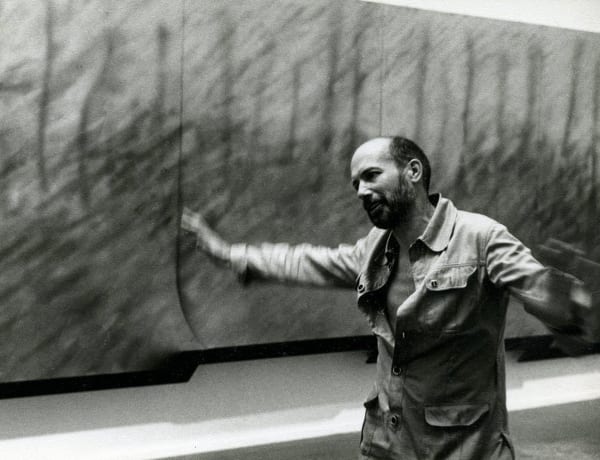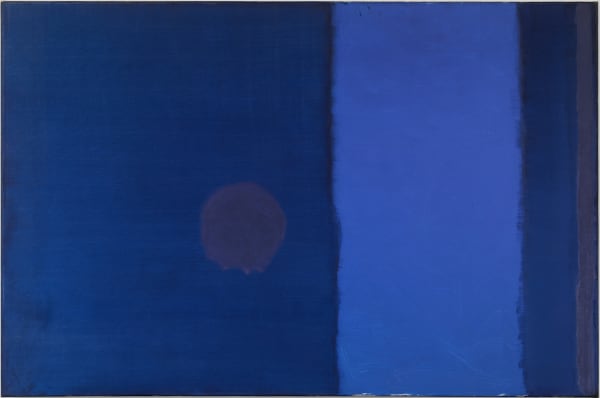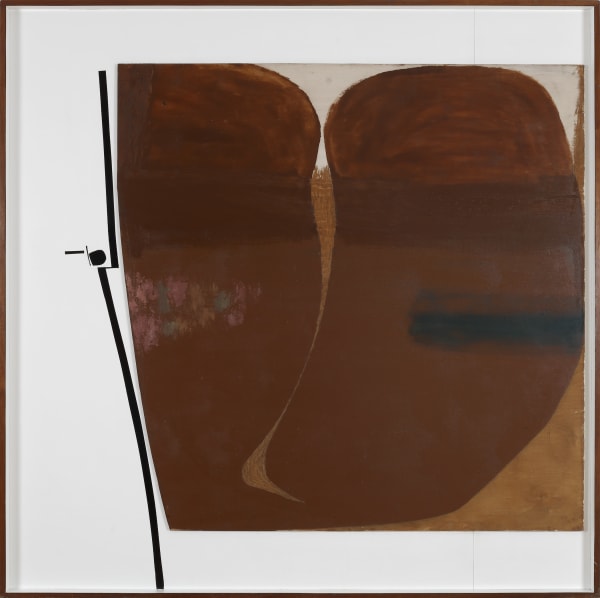-
-

EDWARD BURRA
-

PATRICK HERON
-

HOWARD HODGKIN
-

LEON KOSSOFF
-

MAGDALENE ODUNDO
-
-
-

EDUARDO PAOLOZZI
-

victor PASMORE
-

PAULA REGO
-

bridget RILEY
-

RICHARD SMITH
-
-
HOWARD HODGKIN
1932 - 2017 -
The density of Hodgkin’s painted frames casts them in the role of buffer states, shields of colour erected to shelter the fragile, evanescent images at the heart of a painting from too close and immediate a contact with the world beyond the painting. It also turns his pictures into conduits, leading into private or secret worlds.
- Andrew Graham-Dixon, 1994
-
Egypt (1993-96) by Howard Hodgkin will join further landscapes made in what is widely regarded as the artist’s ‘golden period’ of 1978 to 1999. Landscapes formed an integral part of Hodgkin’s practice and Egypt appears as an important subject in works made between 1970 and 2002. These landscapes showcase Hodgkin’s emboldened style which coincided with his strengthening career following representation of Great Britain at the Venice Biennale in 1984 and winning the Turner Prize in 1985.
-

-
BRIDGET RILEY
Born 1931 -
I do not select single colours but rather pairs, triads or groups of colour, which taken together act as generators of what can be seen through or via the painting... [The eye] should feel caressed and soothed, experience frictions and ruptures, glide and drift. Vision can be arrested, tripped up or pulled back in order to float free again.
- Bridget Riley, 2005
-
EDUARDO PAOLOZZI
1924 - 2005 -
Three sculptures by Eduardo Paolozzi on display are no doubt symbolic of the struggles of a society still living in the shadow of two apocalyptic world wars. These works, however, are not morbid in tone but more hopeful and impish in their peculiar appearance. Damaged Warrior seems to have been built from the mud and detritus of the trenches, irregular pieces welded together as an awkward composite. As Kirkpatrick aptly remarked, ‘one senses that the vital spirit might have escaped if more time had been taken in rebuilding the physical shell...'.
-

-

-
LEON KOSSOFF
1926 - 2019 -
I’m always working to make it more like the sitter, to make the structure more real, more intense – but in the end, at the final minute, something else happens, something overtakes me in his presence, or in the presence of whoever I’m painting…I stop thinking for better or worse.
- Leon Kossoff, 1988
The sitter in this portrait, Chaim Kossoff (b. 1925), is Leon Kossoff's brother and the oldest of Wolf and Rachel Kossoff's seven children. He ran his own bakery business (independent of his father's), and first appears in Kossoff's paintings in 1975. Chaim began sitting regularly for his brother after the death of their father in 1982, and, as Kossoff's father had been before him, was a reliable and dedicated sitter for twenty-four portraits in total.
-

-

-
frieze masters 2024
Regents Park
Stand C17
Hazlitt Holland-Hibbert
38 Bury Street
St James's SW1Y 6BB
info@hh-h.com | +44 20 7839 7600 | hh-h.com
Stand C17, 9 - 13 October 2024







































